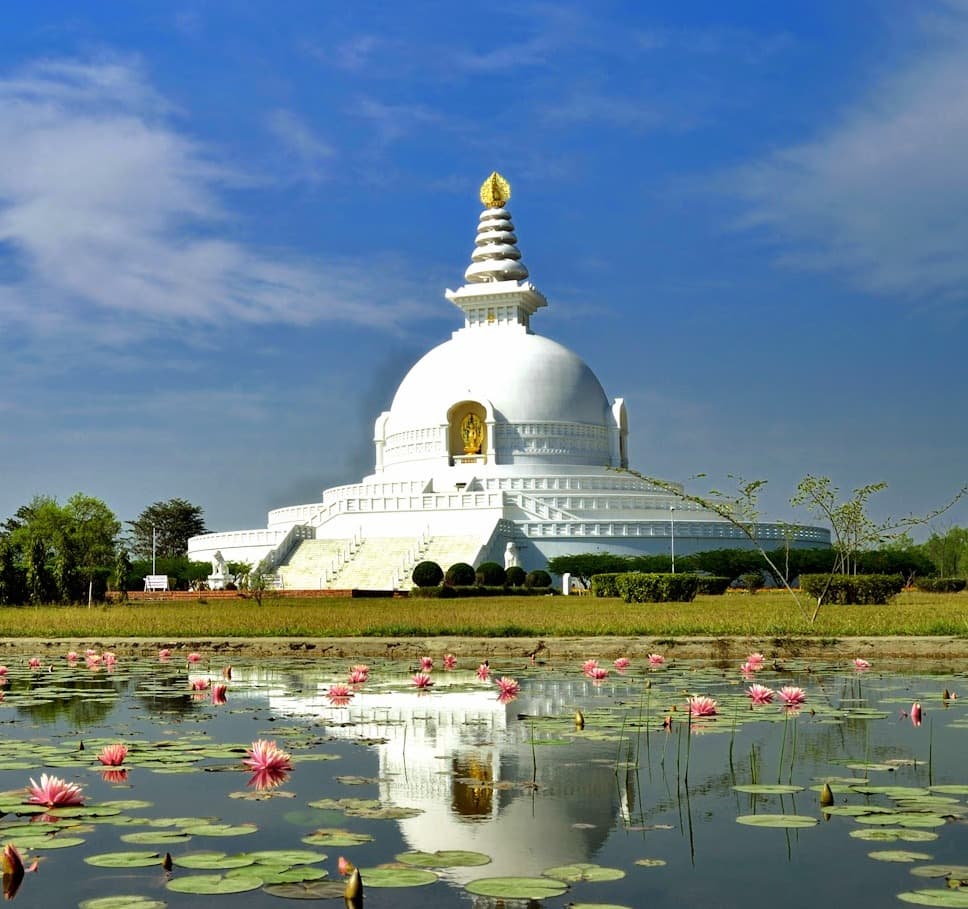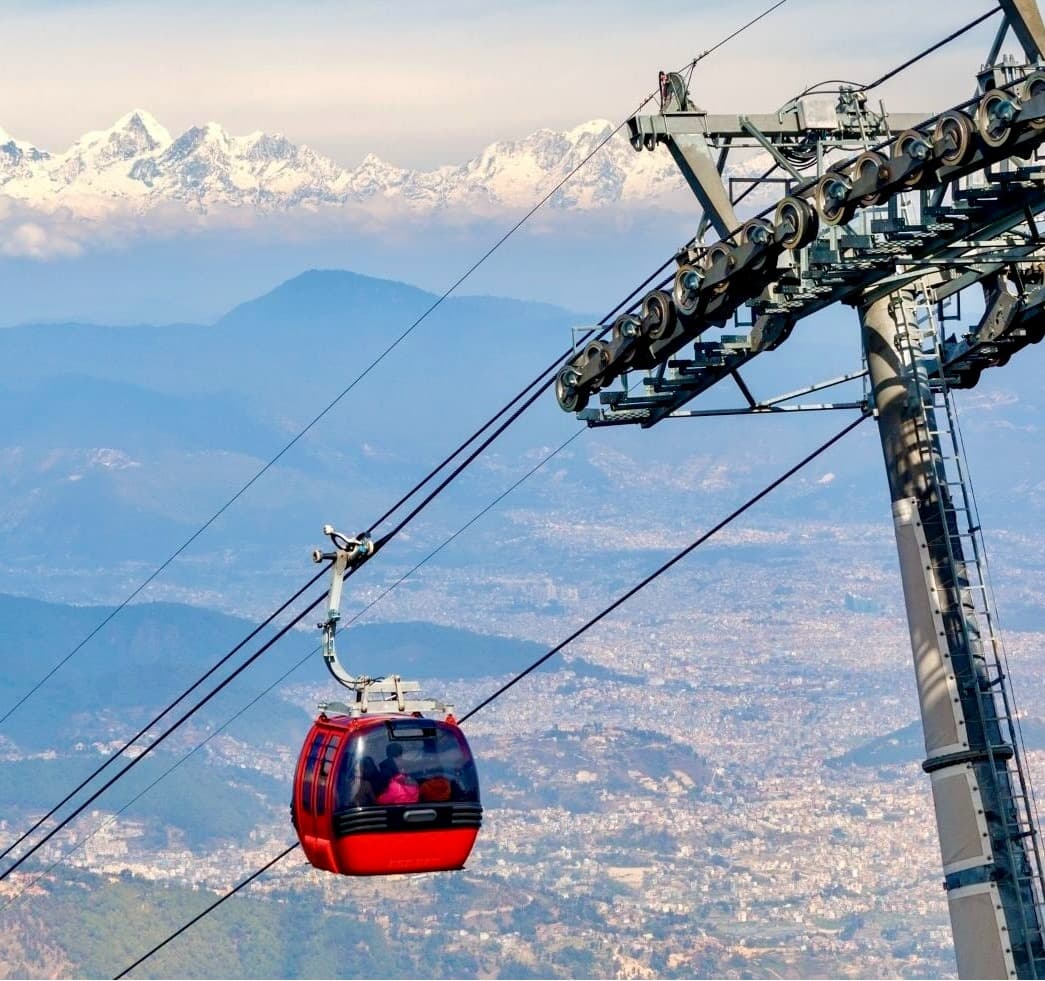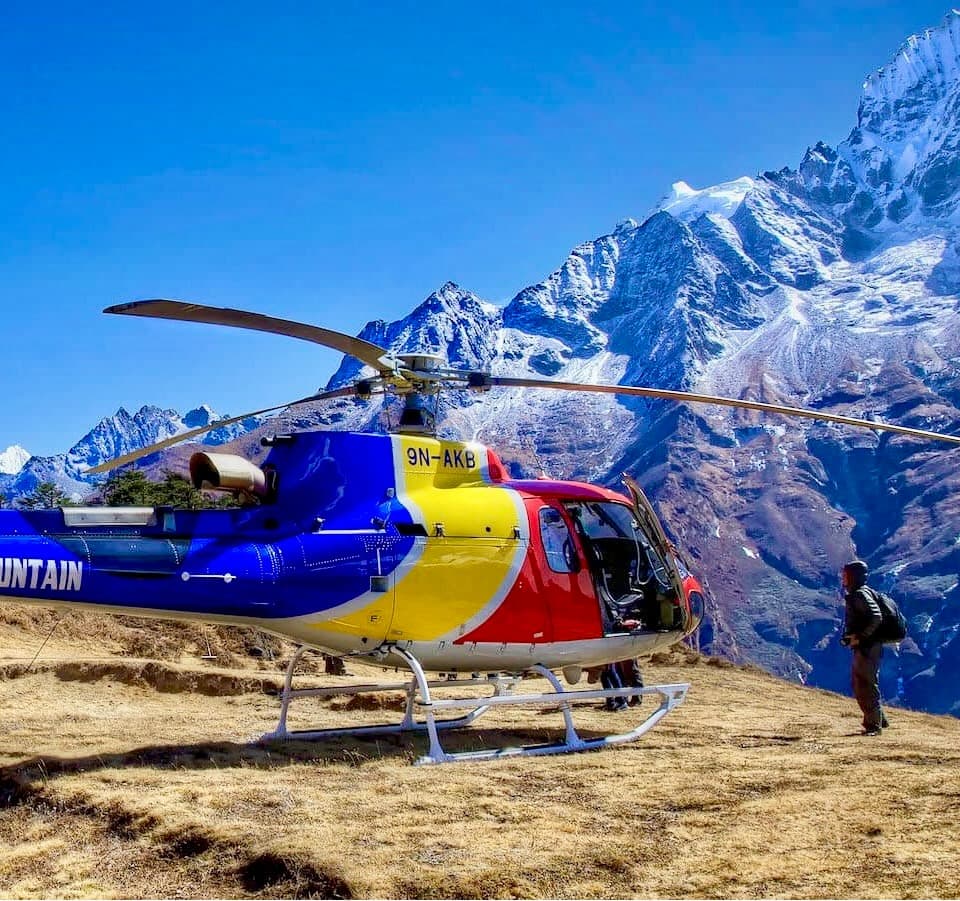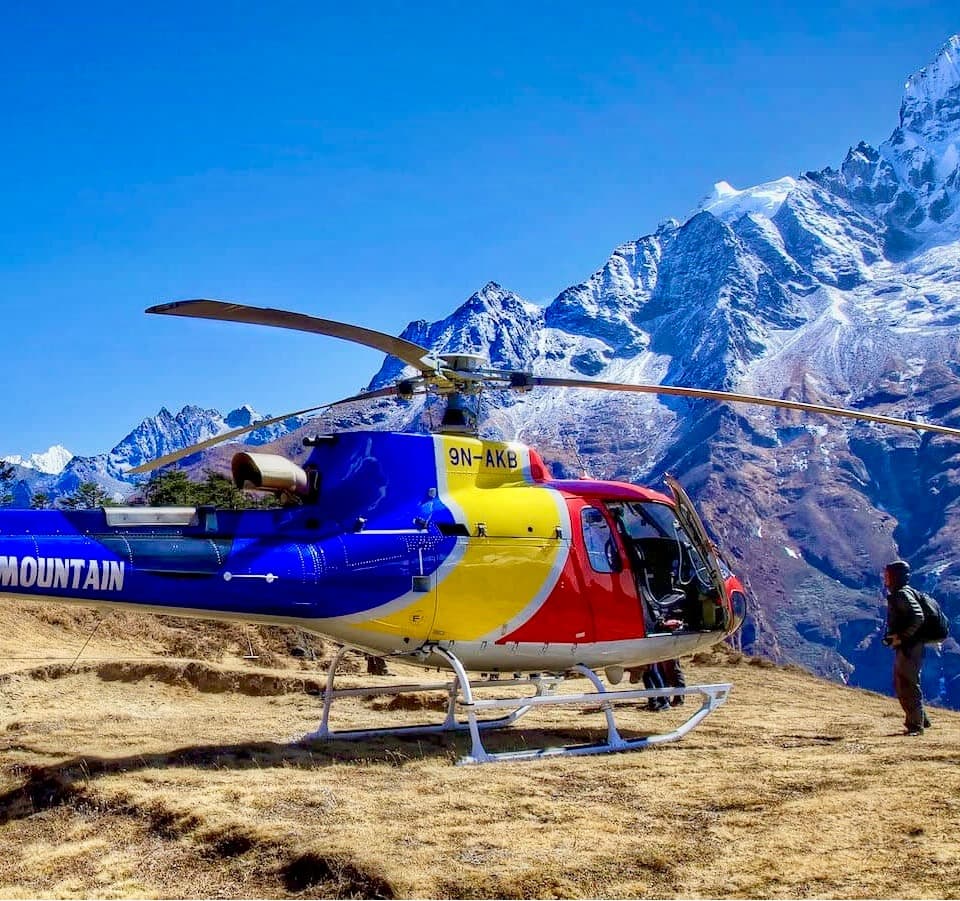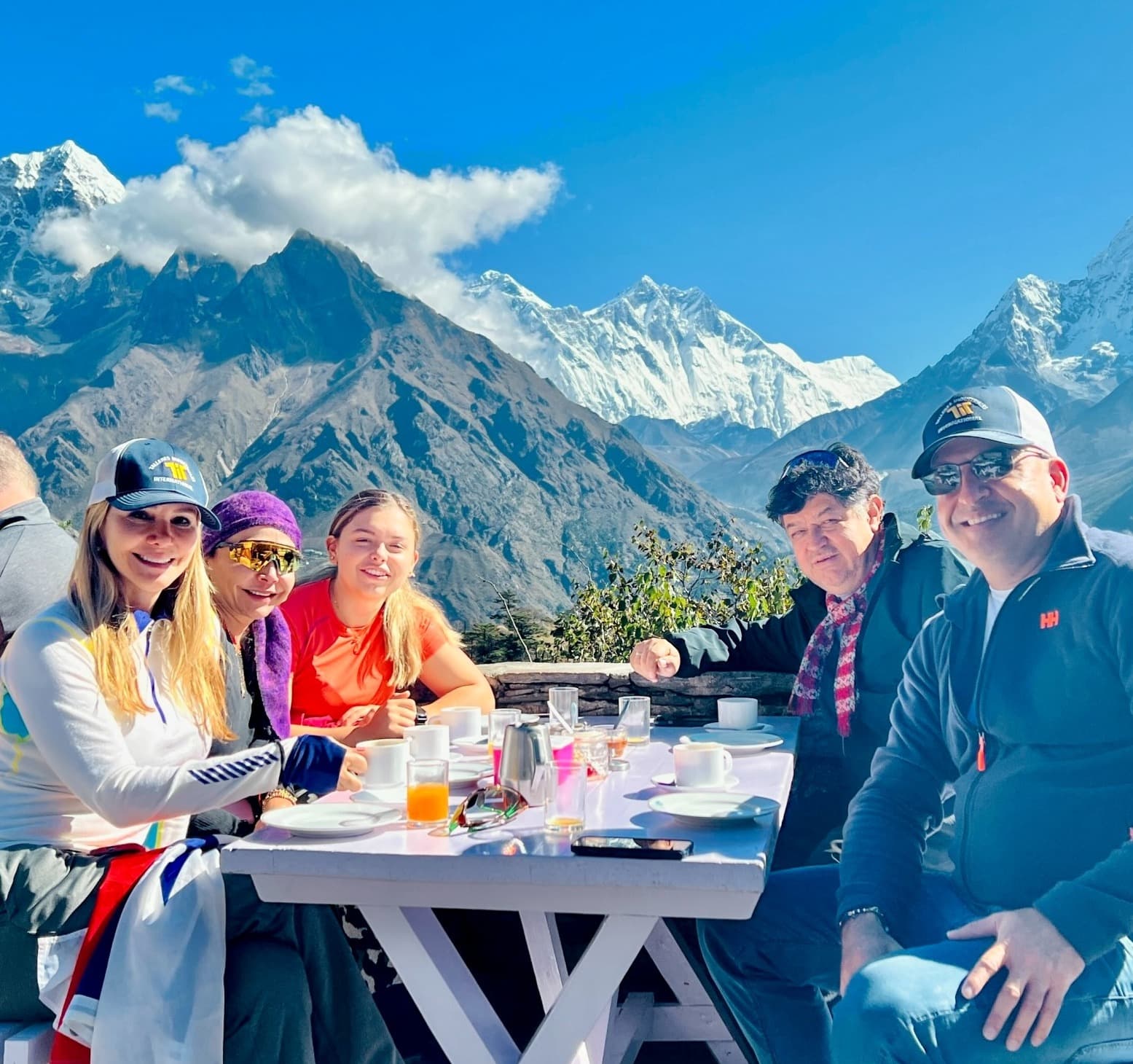Nepal, a land steeped in history and cultural richness, offers a unique and immersive experience for travelers seeking to explore its ancient heritage. Luxury Holidays Nepal presents an array of meticulously crafted Cultural and Historical Tours in Nepal, designed to take you on a journey through the country's most iconic landmarks, sacred temples, and vibrant traditional villages. Our tours offer an unparalleled opportunity to delve into Nepal's fascinating past, discover its profound spiritual traditions, and experience the timeless beauty of its architectural marvels. Whether you are a history enthusiast, a spiritual seeker, or simply curious about Nepal's rich culture, our tours provide a comprehensive and enriching exploration of this captivating nation.
Why Nepal for Cultural and Historical Tours?
Nepal is a treasure trove of cultural and historical wonders, making it an ideal destination for those seeking a deep and immersive travel experience. Here are compelling reasons why Cultural and Historical Tours in Nepal are unparalleled:
- Rich Cultural Heritage: Nepal boasts a diverse and vibrant cultural heritage that reflects its multi-ethnic and multi-religious society. From the intricate Newari architecture of the Kathmandu Valley to the traditional lifestyles of remote Himalayan villages, Nepal’s cultural tapestry is incredibly varied and richly woven.
- Historical Significance: Home to some of the world’s most significant historical sites, Nepal offers a journey through time. The ancient city of Lumbini, the birthplace of Buddha, and the medieval Durbar Squares of Kathmandu, Patan, and Bhaktapur are just a few examples of Nepal’s rich historical legacy.
- UNESCO World Heritage Sites: Nepal is home to several UNESCO World Heritage Sites that encapsulate its historical and cultural essence. The Kathmandu Valley alone houses seven such sites, including the Swayambhunath Stupa (Monkey Temple), Pashupatinath Temple, and Boudhanath Stupa, each with its own unique story and significance.
- Spiritual Hub: For centuries, Nepal has been a center of spiritual enlightenment and religious diversity. The country’s myriad temples, stupas, and monasteries offer profound spiritual experiences, attracting pilgrims and spiritual seekers from around the world.
- Living Traditions: Unlike many places where historical sites are static and preserved, Nepal’s cultural and historical sites are often living entities. Festivals, rituals, and daily practices keep these sites vibrant and alive, offering visitors a dynamic and engaging experience.
- Art and Architecture: The art and architecture of Nepal are unique and captivating. From the detailed wood carvings of the Newari temples to the grand stupas adorned with prayer flags, Nepal’s artistic heritage is a feast for the eyes. Museums and galleries across the country display exquisite collections of ancient artifacts, traditional crafts, and contemporary art.
- Scenic Beauty: The natural beauty of Nepal enhances its cultural and historical tours. The stunning backdrop of the Himalayas, lush green valleys, and serene rivers provide a picturesque setting for exploring the country’s heritage sites.
- Warm Hospitality: Nepalese people are known for their warm hospitality and friendliness. Visitors on Cultural and Historical Tours in Nepal will find themselves welcomed into local communities, gaining insights and making connections that enhance their travel experience.
By choosing Nepal for your cultural and historical tours, you are embarking on a journey that offers a profound connection to history, spirituality, and tradition, all set against the breathtaking beauty of the Himalayas.
Discovering the Rich History of Kathmandu Valley
The Kathmandu Valley, a cultural and historical heartland of Nepal, is a treasure trove of ancient architecture, vibrant traditions, and sacred sites. With its three historic cities—Kathmandu, Patan, and Bhaktapur—the valley offers a journey through time, showcasing the rich legacy of the Newar civilization. Visitors can marvel at the intricately designed palaces, temples, and courtyards that date back centuries, experiencing the living heritage that continues to thrive amidst the hustle and bustle of modern life. Exploring the Kathmandu Valley is a captivating dive into Nepal’s storied past, where every corner reveals a new facet of its rich history.
Top UNESCO World Heritage Sites to Visit in Nepal
Nepal is home to several UNESCO World Heritage Sites that highlight its diverse cultural and natural heritage. These sites include the sacred Pashupatinath Temple, the colossal Boudhanath Stupa, and the ancient Swayambhunath Stupa (Monkey Temple) in Kathmandu, each offering unique insights into Nepalese spirituality and architecture. The Kathmandu Valley's Durbar Squares in Kathmandu, Patan, and Bhaktapur are rich in historical significance and architectural brilliance. Beyond the valley, the serene Lumbini, the birthplace of Buddha, and the spectacular Chitwan National Park offer visitors a blend of cultural and natural beauty, making Nepal a must-visit for history enthusiasts and nature lovers alike.
A Journey Through Nepal’s Ancient Temples and Monasteries
Embark on a spiritual and historical journey through Nepal’s ancient temples and monasteries, where centuries-old traditions and architectural marvels await. From the iconic Swayambhunath and Boudhanath stupas in Kathmandu to the sacred Muktinath Temple in the Annapurna region, these spiritual sites offer profound insights into Nepal’s religious heritage. Monasteries like Tengboche in the Everest region provide a serene escape, surrounded by the majestic Himalayas. Exploring these sacred sites not only offers a glimpse into Nepal’s rich spiritual practices but also allows for moments of introspection and tranquility in the midst of breathtaking landscapes.
The Cultural Significance of Festivals in Nepal
Festivals in Nepal are a vibrant tapestry of cultural and religious significance, reflecting the country's diverse heritage and deep-rooted traditions. Each festival, from the grand Dashain and Tihar to the colorful Holi and the serene Buddha Jayanti, showcases the rich customs, rituals, and communal spirit that define Nepalese society. These celebrations offer visitors a unique opportunity to witness and partake in the joyous and reverent practices that bring communities together, highlighting the essence of Nepal's cultural identity. Participating in these festivals provides a profound insight into the values and beliefs that have shaped Nepal over the centuries.
Exploring the Historic Durbar Squares of Kathmandu, Patan, and Bhaktapur
The historic Durbar Squares of Kathmandu, Patan, and Bhaktapur are architectural marvels that stand as testaments to Nepal’s rich cultural and historical heritage. Each square, a UNESCO World Heritage Site, is adorned with ancient palaces, courtyards, temples, and statues that date back to the Malla dynasty. These vibrant hubs of culture and history offer a glimpse into the opulence and artistic prowess of medieval Nepal. Exploring these Durbar Squares, visitors can marvel at the intricate wood and stone carvings, participate in traditional festivals, and immerse themselves in the living history that continues to thrive in these ancient cities.
A Guide to Nepal’s Living Goddess: The Kumari Tradition
The Kumari tradition, a unique and revered cultural practice in Nepal, involves the worship of a living goddess, believed to be the earthly embodiment of divine female energy. The young girl selected as the Kumari undergoes rigorous rituals and must meet strict criteria to embody purity and divinity. Residing in the Kumari Ghar in Kathmandu, she is a central figure in various religious ceremonies and festivals, including the grand Indra Jatra. Visiting the Kumari in her palace offers a rare glimpse into this fascinating tradition, highlighting the blend of spirituality and culture that defines Nepalese society.
Nepal’s Hidden Gems: Off-the-Beaten-Path Historical Sites
While Nepal is renowned for its iconic landmarks, the country is also home to numerous off-the-beaten-path historical sites that offer a more intimate glimpse into its rich past. Hidden gems such as the ancient city of Tansen, the serene Kirtipur, and the mystical Khokana village showcase the unspoiled beauty and cultural heritage that often go unnoticed. These lesser-known sites provide a tranquil escape from the tourist crowds, allowing visitors to explore historical monuments, traditional crafts, and timeless customs in a more personal and immersive setting. Discovering these hidden gems offers a unique and rewarding experience for history enthusiasts and curious travelers alike.
A Day in the Life: Traditional Newari Culture in Kathmandu
Spending a day immersed in the traditional Newari culture of Kathmandu reveals the rich tapestry of customs, art, and daily life that defines this vibrant community. From the bustling markets and ancient temples of Ason and Indra Chowk to the intricate craftsmanship of Patan’s artisan workshops, the Newar people’s heritage is vividly displayed. Visitors can savor authentic Newari cuisine, participate in traditional festivals, and witness age-old rituals that continue to thrive in the heart of the city. Experiencing a day in the life of the Newari community offers a profound appreciation of their unique cultural identity and enduring traditions.
The Influence of Buddhism and Hinduism on Nepalese Architecture
The architectural landscape of Nepal is profoundly shaped by the intertwined influences of Buddhism and Hinduism, creating a unique and harmonious blend of styles and structures. Temples, stupas, and monasteries across the country, such as the iconic Pashupatinath Temple and the grand Boudhanath Stupa, exemplify this fusion. The intricate carvings, ornate decorations, and symbolic designs reflect the spiritual beliefs and artistic traditions of both religions. This rich architectural heritage not only showcases Nepal’s religious diversity but also highlights the country’s profound spiritual and cultural legacy, offering visitors a visual journey through its sacred history.
Walking Tours of Kathmandu: A Cultural and Historical Experience
Walking tours of Kathmandu offer a captivating way to experience the city's rich cultural and historical tapestry. These tours guide visitors through narrow, bustling streets and ancient alleys, unveiling the hidden gems of the capital. From the spiritual ambiance of Swayambhunath Stupa (Monkey Temple) and the historic grandeur of Kathmandu Durbar Square to the vibrant markets of Ason and Indra Chowk, each step reveals a new story. Walking tours provide an immersive experience, allowing travelers to connect deeply with the local culture, interact with residents, and appreciate the intricate details that define Kathmandu's heritage.
Exploring the History and Culture of Lumbini: The Birthplace of Buddha
Lumbini, the revered birthplace of Buddha, is a significant pilgrimage site that offers a profound insight into the history and culture of Buddhism. Visitors to Lumbini can explore the sacred Mayadevi Temple, the Ashoka Pillar, and numerous monasteries built by Buddhist communities from around the world. The serene ambiance of the Lumbini Garden, coupled with the spiritual significance of the site, creates a tranquil environment for reflection and learning. Exploring Lumbini provides a unique opportunity to connect with the roots of Buddhism and witness the global cultural contributions that enrich this UNESCO World Heritage Site.
The Art and Architecture of Medieval Nepal
The art and architecture of medieval Nepal are characterized by intricate craftsmanship, religious symbolism, and a harmonious blend of styles influenced by both Hinduism and Buddhism. This period, especially evident in the Kathmandu Valley, saw the creation of stunning palaces, temples, and courtyards adorned with elaborate wood and stone carvings. The Durbar Squares of Kathmandu, Patan, and Bhaktapur stand as magnificent examples of medieval Nepalese architecture, showcasing the skill and artistry of Newar craftsmen. The vibrant murals, exquisite sculptures, and iconic pagoda-style structures from this era highlight Nepal's rich artistic heritage and its enduring cultural legacy.
Nepal’s Royal Palaces: A Glimpse into the Country’s Monarchical Past
Nepal’s royal palaces offer a fascinating glimpse into the country’s monarchical past, showcasing the grandeur and architectural brilliance of a bygone era. Palaces such as the Hanuman Dhoka in Kathmandu, the Patan Durbar Palace, and the Bhaktapur Durbar Palace are stunning examples of traditional Newar architecture, featuring intricately carved woodwork, ornate courtyards, and historic artifacts. These palaces not only served as royal residences but also as centers of governance and cultural activities. Visiting these majestic structures allows one to step back in time and experience the opulence and historical significance of Nepal’s royal heritage.
Cultural Etiquette: Do’s and Don’ts When Visiting Historical Sites in Nepal
Respecting cultural etiquette is crucial when visiting historical sites in Nepal to ensure a harmonious and respectful experience. Do dress modestly, covering shoulders and knees, and remove shoes when entering temples and monasteries. It’s important to be quiet and respectful in sacred areas and to seek permission before taking photographs, especially of religious ceremonies or locals. Don’t touch statues or religious artifacts, and avoid pointing your feet at people or sacred objects. Following these simple guidelines helps preserve the sanctity of Nepal’s cultural heritage and fosters a positive interaction with the local community.
The Evolution of Nepalese Art Through the Centuries
The evolution of Nepalese art through the centuries is a testament to the country’s rich cultural heritage and diverse influences. Starting from the early Licchavi period, characterized by stone sculptures and intricate metalwork, Nepalese art has continuously evolved, incorporating elements from Hinduism and Buddhism. The medieval period saw the rise of exquisite Newar artistry in the Kathmandu Valley, with detailed wood carvings, vibrant murals, and thangka paintings. In contemporary times, Nepalese art has embraced modern techniques while still honoring traditional motifs. This continuous evolution reflects the dynamic nature of Nepal’s artistic expression and its ability to adapt and thrive through changing eras.
Traditional Music and Dance: The Cultural Heartbeat of Nepal
Traditional music and dance are the cultural heartbeat of Nepal, reflecting the country's rich heritage and diverse ethnic traditions. Instruments like the sarangi, madal, and bansuri create enchanting melodies that accompany various dance forms such as the lively Jhyaure, the ritualistic Lakhey, and the classical Newari dances. These performances are integral to festivals, religious ceremonies, and communal celebrations, serving as a vibrant expression of Nepalese identity and community spirit. Experiencing traditional music and dance in Nepal offers a profound connection to the country's cultural soul, showcasing the artistic talents and joyous spirit of its people.
Historical Insights: The Story of Nepal’s Unification
The story of Nepal’s unification is a tale of visionary leadership and strategic conquests, primarily led by King Prithvi Narayan Shah in the mid-18th century. Through a series of military campaigns and alliances, Prithvi Narayan Shah succeeded in consolidating numerous small, fragmented kingdoms into a single, unified nation. His vision of a strong, sovereign Nepal laid the foundation for the modern state, fostering a sense of national identity and unity. Exploring this pivotal period in Nepal’s history provides valuable insights into the nation's enduring resilience and the strategic brilliance that shaped its formation.
Exploring Ancient Trade Routes in the Himalayas
Exploring the ancient trade routes in the Himalayas offers a fascinating journey through paths once traveled by traders, pilgrims, and adventurers. These routes, such as the Silk Road extensions and the trans-Himalayan trade networks, connected Nepal with Tibet, India, and beyond, facilitating the exchange of goods, cultures, and ideas. Walking these trails today, visitors can witness remnants of historical caravanserais, ancient fortresses, and vibrant market towns. The breathtaking landscapes, combined with the rich historical significance, provide a unique glimpse into the vibrant trade history that has shaped the Himalayan region and its cultural tapestry.
The Role of Craftsmanship in Preserving Nepal’s Cultural Heritage
Craftsmanship plays a crucial role in preserving Nepal’s cultural heritage, ensuring that traditional skills and artistic expressions are passed down through generations. Artisans in Nepal are renowned for their expertise in wood carving, metalwork, pottery, and weaving, creating intricate pieces that reflect the country’s rich history and spiritual traditions. From the detailed carvings adorning ancient temples and palaces to the beautiful Thangka paintings and handcrafted jewelry, these crafts not only embody Nepal’s artistic legacy but also sustain cultural identity and economic livelihoods. Supporting local craftsmanship helps keep these ancient traditions alive, contributing to the preservation of Nepal’s cultural heritage.
A Culinary Journey: Traditional Nepali Food and Its Cultural Significance
Embarking on a culinary journey through Nepal offers a delightful exploration of the country’s traditional food and its deep cultural significance. Nepali cuisine, characterized by its diverse flavors and wholesome ingredients, reflects the country’s rich ethnic diversity and agricultural abundance. Staples like dal bhat (lentil soup with rice), momos (dumplings), and gundruk (fermented leafy greens) are not just meals but integral parts of daily life and festive celebrations. Each dish tells a story of Nepal’s history, geography, and cultural practices, providing a delicious and insightful way to experience the country’s vibrant heritage. Exploring traditional Nepali food is a sensory journey that connects visitors with the heart and soul of Nepalese culture.
Cost of Cultural and Historical Tours in Nepal
The cost of Cultural and Historical Tours in Nepal varies depending on the duration, inclusions, and level of comfort desired. Typically, these tours can range from $500 for short, multi-day excursions to over $2,000 for comprehensive packages that include luxury accommodations, guided tours, and all necessary permits. Factors such as transportation, entry fees to heritage sites, meals, and additional activities can also influence the overall cost. Despite the variation in price, these tours offer excellent value, providing rich experiences and deep insights into Nepal’s cultural and historical treasures.
Top Cultural and Historical Tours in Nepal
Some of the top Cultural and Historical Tours in Nepal include the Kathmandu Cultural and Historical Tour, which covers key UNESCO World Heritage Sites like Swayambhunath, Pashupatinath, and Kathmandu Durbar Square. Another popular choice is the Bhaktapur and Patan Heritage Tour, offering an immersive experience in these ancient cities known for their exquisite Newari architecture. The Lumbini Pilgrimage Tour is also highly regarded, taking visitors to the birthplace of Buddha and various important monasteries. These tours provide a comprehensive look at Nepal's rich cultural landscape, each highlighting unique aspects of the nation's history and traditions.
Best Cultural and Historical Tours in Nepal
The best Cultural and Historical Tours in Nepal are those that offer a blend of iconic landmarks, authentic cultural experiences, and insightful guides. The Nepal Heritage Tour Package stands out, encompassing visits to the Kathmandu Valley, Lumbini, and Pokhara, providing a well-rounded exploration of the country’s historical and cultural highlights. The Nepal Temple Tours offer a deep dive into the spiritual and architectural marvels of Nepal, visiting sacred sites across the nation. Additionally, the Nepal Traditional Village Tours allow travelers to experience rural life and age-old customs firsthand, making these tours among the best ways to truly connect with Nepal's cultural heritage.
Cultural and Historical Tours in Nepal offer an enriching and immersive experience, allowing travelers to delve into the country's rich heritage and vibrant traditions. From the bustling streets of Kathmandu to the serene temples of Lumbini, these tours provide a comprehensive exploration of Nepal's historical landmarks, spiritual sites, and traditional villages. Whether you're a history enthusiast, a cultural explorer, or a spiritual seeker, these tours promise a profound connection with Nepal's unique cultural and historical tapestry. Embark on a journey with Luxury Holidays Nepal to discover the timeless beauty and profound heritage of this enchanting land.
General FAQs on Cultural and Historical Tours in Nepal
1. What are Cultural and Historical Tours in Nepal?
Cultural and Historical Tours in Nepal are specially designed travel experiences that take visitors through the country’s rich heritage, exploring ancient cities, temples, palaces, and traditional villages. These tours offer insights into Nepal’s history, architecture, art, and religious practices.
2. What are the top destinations included in these tours?
Top destinations typically include the Kathmandu Valley with its UNESCO World Heritage Sites like Swayambhunath Stupa, Pashupatinath Temple, Boudhanath Stupa, and the Durbar Squares of Kathmandu, Patan, and Bhaktapur. Other significant sites include Lumbini, the birthplace of Buddha, and traditional villages such as Tansen and Bandipur.
3. How long do Cultural and Historical Tours in Nepal usually last?
The duration of these tours can vary widely, ranging from short 3-day excursions to comprehensive 10-day or more itineraries. The length of the tour depends on the number of sites included and the depth of exploration desired.
4. What is the best time to take a Cultural and Historical Tour in Nepal?
The best time to visit Nepal for cultural and historical tours is during the spring (March to May) and autumn (September to November) seasons. During these times, the weather is pleasant, making it ideal for sightseeing and outdoor activities.
5. Are these tours suitable for all age groups?
Yes, Cultural and Historical Tours in Nepal are suitable for all age groups. The tours are generally flexible and can be tailored to accommodate the needs and interests of families, solo travelers, seniors, and even children.
6. What should I pack for a Cultural and Historical Tour in Nepal?
When packing for a cultural and historical tour, it’s important to bring comfortable walking shoes, modest clothing to respect local customs, a hat or cap, sunscreen, a camera, and any personal essentials. It's also a good idea to carry a reusable water bottle and some local currency for small purchases.
7. Are there any specific cultural etiquettes I should be aware of?
Yes, visitors should dress modestly, especially when visiting religious sites. It is customary to remove shoes before entering temples and monasteries. Being respectful and quiet in sacred areas, and asking for permission before taking photographs of people or ceremonies, is also important.
8. Do I need a guide for these tours?
While it is possible to visit many sites independently, having a knowledgeable guide can greatly enhance the experience. Guides provide valuable historical context, cultural insights, and ensure that you don’t miss any important details.
9. What is included in the cost of these tours?
The cost typically includes accommodation, transportation, guided tours, entry fees to heritage sites, and some meals. However, it’s important to check the specific inclusions and exclusions with your tour provider.
10. How can I book a Cultural and Historical Tour in Nepal?
You can book a Cultural and Historical Tour in Nepal through reputable travel agencies like Luxury Holidays Nepal, which offers a variety of packages. Bookings can usually be made online via their website or by contacting their customer service for personalized itineraries.
11. Are Cultural and Historical Tours in Nepal customizable?
Yes, Luxury Holidays Nepal, offers customizable itineraries to suit your specific interests, time constraints, and budget. You can tailor the tour to focus more on certain aspects, such as architecture, spirituality, or traditional crafts.
12. What languages are the tours conducted in?
Tours are typically conducted in English. However, we can arrange guides who speak other languages, such as French, German, Spanish, Chinese, Japanese, and more, depending on availability.
13. Are there any physical requirements for these tours?
Most Cultural and Historical Tours in Nepal involve a fair amount of walking, often on uneven surfaces. While these tours are generally suitable for all ages, it’s important to consider any personal physical limitations and communicate with us.
14. How safe is it to travel on these tours?
Nepal is generally a safe destination for travelers. However, it’s always advisable to follow standard travel safety guidelines, such as staying aware of your surroundings, avoiding isolated areas at night, and keeping your valuables secure. Travel insurance is also recommended.
15. What kind of accommodation can I expect on these tours?
Accommodation varies depending on the tour package. Options range from budget hotels and guesthouses to luxury hotels and boutique heritage properties. Specific preferences can often be accommodated if discussed with the tour provider in advance.
16. Will I have the opportunity to interact with local communities?
Yes, many tours include opportunities to interact with local communities. This can include visits to traditional villages, participation in cultural festivals, and experiences such as cooking classes or craft workshops.
17. Are meals included in the tour packages?
Some meals, particularly breakfast, are typically included in most tour packages. However, lunch and dinner might not always be included, allowing you the flexibility to explore local cuisine on your own. It’s best to check the specific details of your tour package.
18. What are some of the cultural highlights I shouldn’t miss?
Key cultural highlights include visiting the Durbar Squares of Kathmandu, Patan, and Bhaktapur; the Swayambhunath and Boudhanath stupas; Pashupatinath Temple; the birthplace of Buddha in Lumbini; and experiencing traditional Newari culture and festivals.
19. How do I get around during the tour?
Transportation is usually provided as part of the tour package. This can include private vehicles, taxis, or even domestic flights for longer distances. We will arrange all necessary transport to ensure a smooth travel experience.
20. What if I have dietary restrictions?
Nepali cuisine can accommodate a variety of dietary needs, including vegetarian and vegan options. It’s important to inform us of any dietary restrictions or allergies in advance so they can make appropriate arrangements.
21. Can I combine cultural and historical tours with other activities?
Absolutely! Many travelers combine cultural and historical tours with other activities such as trekking, wildlife safaris, or adventure sports. Luxury Holidays Nepal offers comprehensive packages that can integrate multiple interests into a single itinerary.
22. Are there any local customs or traditions I should be aware of?
Nepal is rich in customs and traditions. Some important ones include greeting with a “Namaste,” showing respect to elders, and avoiding public displays of affection. It’s also customary to use the right hand for giving and receiving items and to remove shoes before entering homes and temples.
23. What is the best way to respect local culture and traditions?
Being aware of and respectful towards local customs, dressing modestly, asking for permission before taking photographs, and being mindful of your behavior, especially in religious and cultural sites, are essential ways to show respect for Nepalese culture.
24. Can I purchase local crafts and souvenirs during the tour?
Yes, many tours include visits to local markets and artisan workshops where you can purchase traditional crafts and souvenirs. Popular items include handmade jewelry, pottery, wood carvings, Thangka paintings, and Pashmina shawls.
If you need any further information, please contact us by email: at [email protected], Phone: at +977- 985 100 5129 (WhatsApp)



